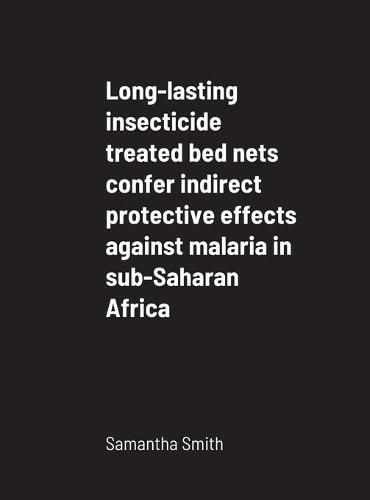Readings Newsletter
Become a Readings Member to make your shopping experience even easier.
Sign in or sign up for free!
You’re not far away from qualifying for FREE standard shipping within Australia
You’ve qualified for FREE standard shipping within Australia
The cart is loading…






This title is printed to order. This book may have been self-published. If so, we cannot guarantee the quality of the content. In the main most books will have gone through the editing process however some may not. We therefore suggest that you be aware of this before ordering this book. If in doubt check either the author or publisher’s details as we are unable to accept any returns unless they are faulty. Please contact us if you have any questions.
The purpose of the project was to evaluate the indirect and direct protection conferred by community-level use of insecticide treated bed nets (ITNs) on occurrence of malaria in children under the age of five in sub-Saharan Africa. A total of 32 336 children under five were included in this cross sectional study of publically available Malaria Indicator Survey data collected between 2009 and 2017. Preliminary analyses identified confounding effects of household socioeconomic status, maternal education, urbanity, age of bednets, existence of standing water located near the respondents, and IRS use. For each country and corresponding year, the crude and adjusted odds ratios along with direct, indirect and total effects of ITN use were estimated. Neighborhood coverage levels of 50-100% and the use of an ITN prevented 8.1 (95% CI: 4.8 -11.1) cases per 100 children under 5, supporting the presence of protective total effects. The overall estimate of direct effects indicated that individuals who lived in a neighborhood coverage between 0-25% and 25-50% ITN coverage and were considered ITN users had a reduction of 2.9 malaria cases per 100 children compared to ITN non-users (95% CI: 0.9-4.7 and 0.7-4.8, respectively). Living in a neighborhood with 50-100% ITN coverage resulted in a reduction of 6.1 cases per 100 children for ITN non-users (95% CI: 2.7-9.7), supporting that there was significant indirect protection. Results for country and year specific data varied for total, direct, and indirect effects.
$9.00 standard shipping within Australia
FREE standard shipping within Australia for orders over $100.00
Express & International shipping calculated at checkout
This title is printed to order. This book may have been self-published. If so, we cannot guarantee the quality of the content. In the main most books will have gone through the editing process however some may not. We therefore suggest that you be aware of this before ordering this book. If in doubt check either the author or publisher’s details as we are unable to accept any returns unless they are faulty. Please contact us if you have any questions.
The purpose of the project was to evaluate the indirect and direct protection conferred by community-level use of insecticide treated bed nets (ITNs) on occurrence of malaria in children under the age of five in sub-Saharan Africa. A total of 32 336 children under five were included in this cross sectional study of publically available Malaria Indicator Survey data collected between 2009 and 2017. Preliminary analyses identified confounding effects of household socioeconomic status, maternal education, urbanity, age of bednets, existence of standing water located near the respondents, and IRS use. For each country and corresponding year, the crude and adjusted odds ratios along with direct, indirect and total effects of ITN use were estimated. Neighborhood coverage levels of 50-100% and the use of an ITN prevented 8.1 (95% CI: 4.8 -11.1) cases per 100 children under 5, supporting the presence of protective total effects. The overall estimate of direct effects indicated that individuals who lived in a neighborhood coverage between 0-25% and 25-50% ITN coverage and were considered ITN users had a reduction of 2.9 malaria cases per 100 children compared to ITN non-users (95% CI: 0.9-4.7 and 0.7-4.8, respectively). Living in a neighborhood with 50-100% ITN coverage resulted in a reduction of 6.1 cases per 100 children for ITN non-users (95% CI: 2.7-9.7), supporting that there was significant indirect protection. Results for country and year specific data varied for total, direct, and indirect effects.